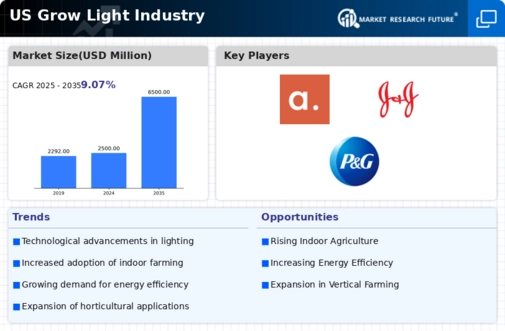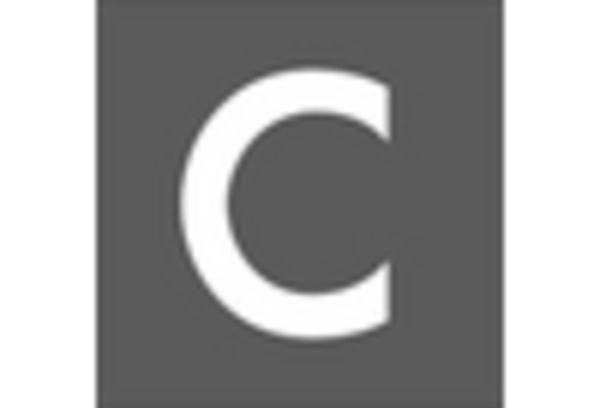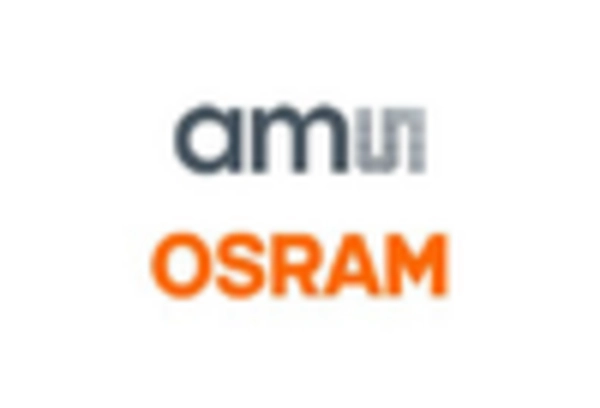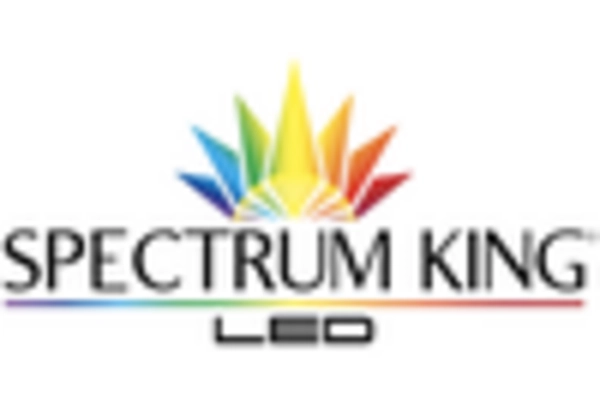Expansion of Commercial Greenhouses
The expansion of commercial greenhouses is a critical driver of the grow light market. As the agricultural sector seeks to increase productivity and extend growing seasons, greenhouse operations are becoming more prevalent. Grow lights are essential in these environments, providing the necessary light spectrum for optimal plant growth, especially during winter months or in regions with limited sunlight. The commercial greenhouse market is projected to grow by 25% by 2030, with a substantial portion of this growth attributed to the adoption of advanced grow light technologies. This trend underscores the importance of grow lights in enhancing crop yields and ensuring consistent production, thereby solidifying their role in the grow light market.
Increased Demand for Indoor Farming
The grow light market is significantly influenced by the rising demand for indoor farming solutions. As urban areas expand and arable land diminishes, indoor farming presents a viable alternative for food production. This trend is particularly pronounced in metropolitan regions, where space constraints necessitate innovative agricultural practices. The market for indoor farming is expected to grow at a CAGR of 20% through 2028, with grow lights playing a crucial role in facilitating year-round crop production. The ability to control environmental factors such as light, temperature, and humidity enhances crop yields and quality, thereby driving the adoption of grow lights in urban farming initiatives. Consequently, the increased demand for indoor farming is a pivotal factor propelling the grow light market.
Technological Advancements in Horticulture
The grow light market is experiencing a surge due to rapid technological advancements in horticultural lighting solutions. Innovations in LED technology have led to more energy-efficient and effective grow lights, which are increasingly favored by both commercial and residential growers. The integration of smart technology, such as IoT-enabled systems, allows for precise control over light intensity and spectrum, optimizing plant growth. As of 2025, the market for advanced grow lights is projected to reach approximately $2 billion, reflecting a compound annual growth rate (CAGR) of around 15% over the next five years. This growth is indicative of the industry's shift towards more sustainable and efficient growing practices, making technological advancements a key driver in the grow light market.
Consumer Awareness of Sustainable Practices
Growing consumer awareness regarding sustainable agricultural practices is reshaping the grow light market. As more individuals become conscious of the environmental impact of traditional farming methods, there is a notable shift towards sustainable alternatives. This awareness is driving demand for energy-efficient grow lights that reduce carbon footprints and lower energy costs. In 2025, it is estimated that approximately 40% of consumers prioritize sustainability when purchasing grow lights, indicating a significant market trend. Retailers and manufacturers are responding by offering products that align with these values, further propelling the growth of the grow light market. This shift towards sustainability not only benefits the environment but also enhances the market's appeal to eco-conscious consumers.
Government Incentives for Agricultural Innovation
Government incentives aimed at promoting agricultural innovation are significantly impacting the grow light market. Various federal and state programs are designed to support the adoption of advanced agricultural technologies, including energy-efficient grow lights. These initiatives often include grants, tax credits, and subsidies that encourage farmers and businesses to invest in modern lighting solutions. As of 2025, it is estimated that government funding for agricultural innovation has increased by 30%, directly benefiting the grow light market. This financial support not only facilitates the transition to more efficient lighting systems but also fosters research and development in the sector, ultimately driving growth and innovation within the grow light market.
















Leave a Comment